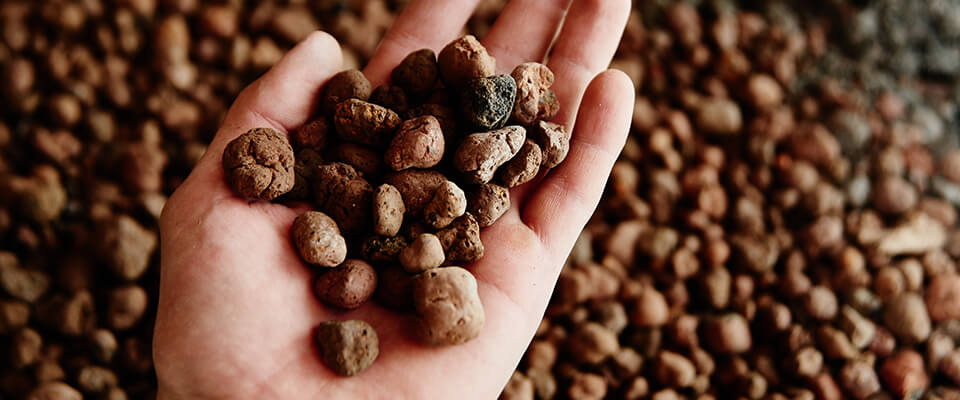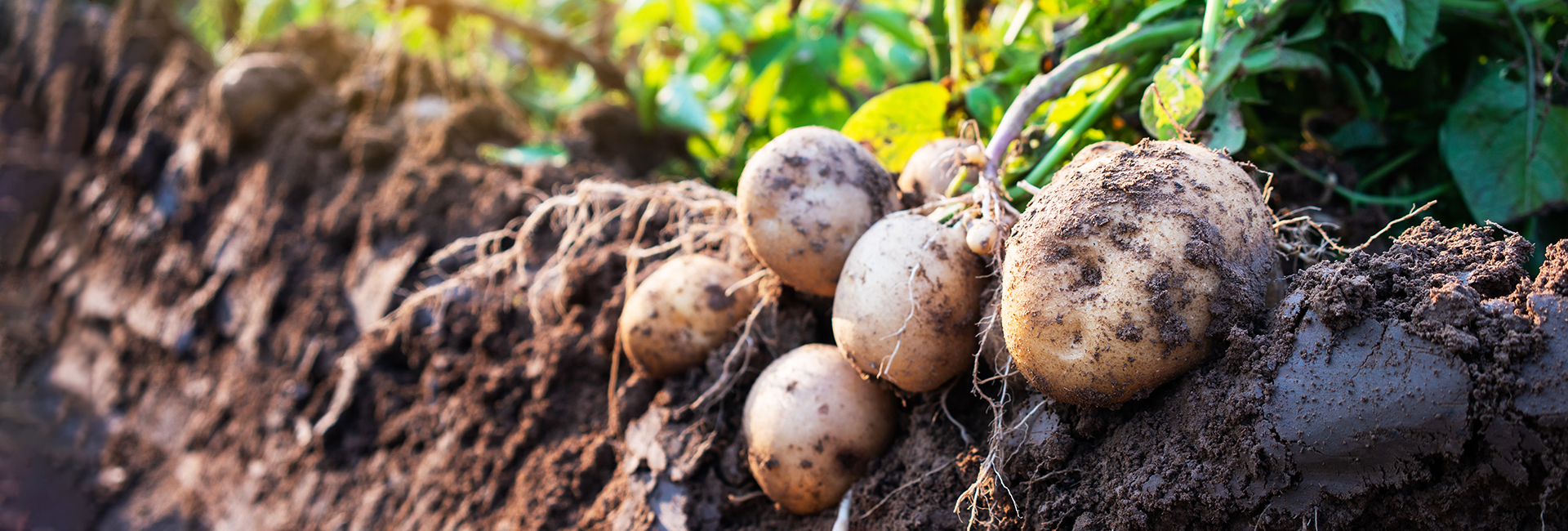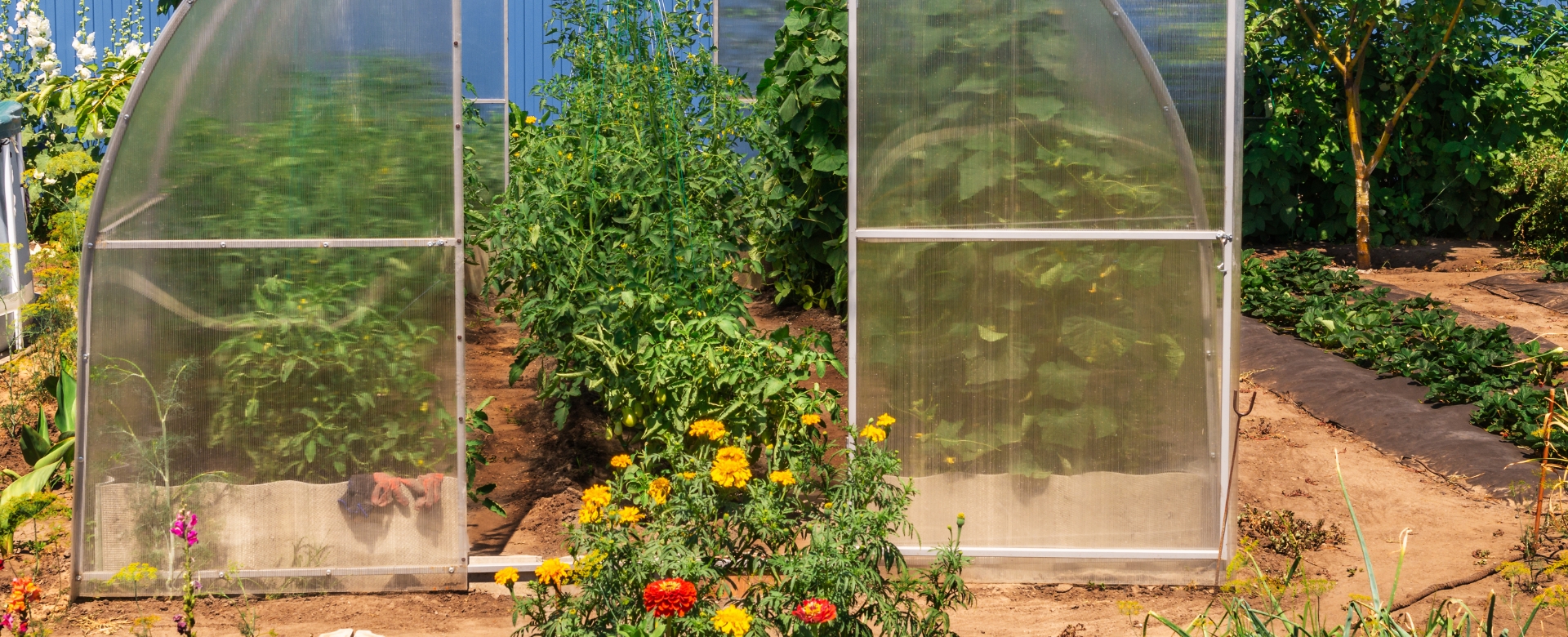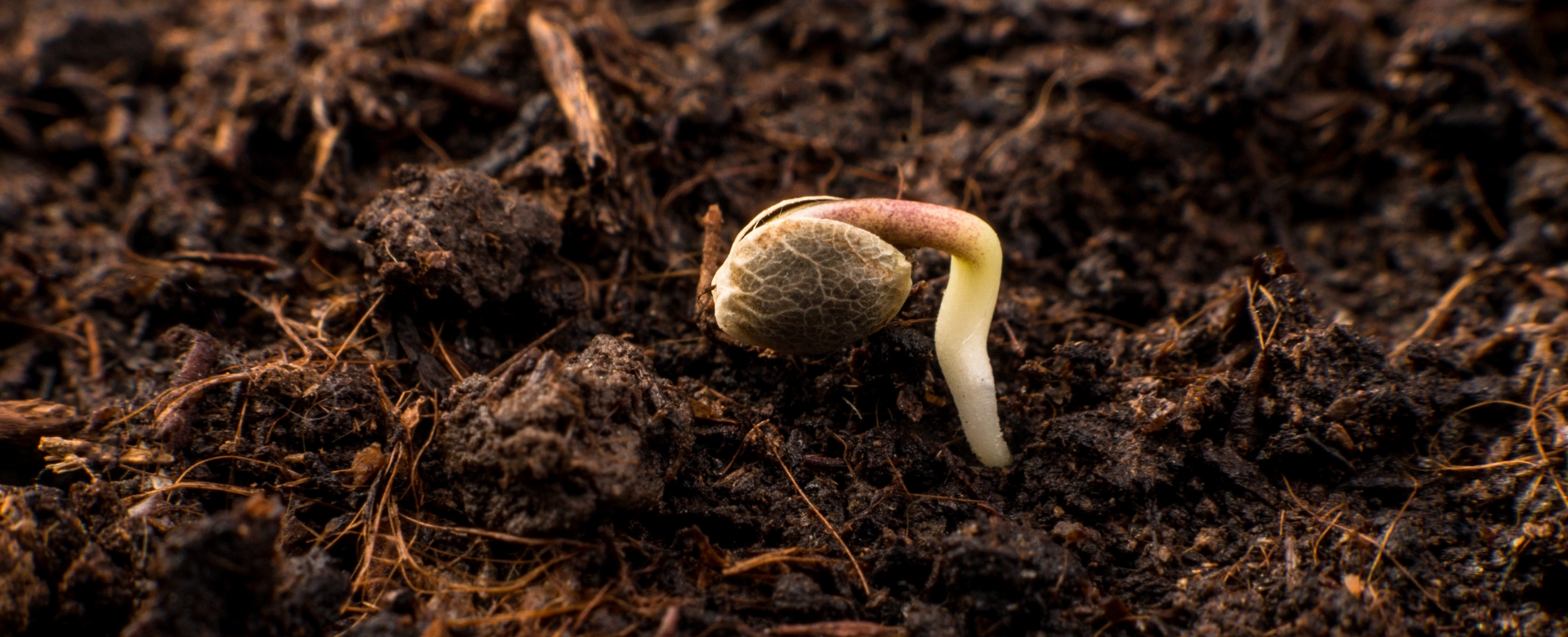Your choice of cannabis growing medium is one of the most important choices you’ll make as a grower. Here’s why: The medium you choose will inform the nutrients you use, how often you need to water your plants, and it can influence plant health.
Plus, growing mediums can influence yield, with some outperforming others.
The decision isn’t easy to make. There are many different types of growing mediums, each with their own advantages and disadvantages. Some of the most popular cannabis mediums include:
- Soil
- Rockwool
- Coco
- Clay pellets
Which is the best? Generally, the cannabis growing medium you choose will be based on a few factors like your budget, your experience level, and the time you have available to look after your plants.
Need some help deciding? This guide covers everything you need to know about the best 11 growing mediums for cannabis, with tips for choosing.
What Is a Growing Medium for Cannabis?
A growing medium is the material in which cannabis plants grow. It supports the root system and works as a reservoir for nutrients and water. The right medium can significantly impact the plant’s development, affecting its oxygenation, moisture levels, and nutrient uptake.
For outdoor growing, soil is the most common medium. But many growers also choose soilless options like coco coir, which is great, but doesn’t hold nutrients well.
For indoor and hydroponic growing, there are numerous options for mediums. Clay pellets, rockwool and coco coir, for example, are popular grow mediums for hydroponic setups.
Best Growing Medium for Cannabis

Choosing the right growing medium for your plants is important for their growth. The most popular include:
1. Soil
Soil is a popular choice for growing cannabis because it’s easy to find, affordable, and great for beginners. It offers nutrients and support for plants, and its healthy microbial life breaks down these nutrients so cannabis plants can absorb them more easily.
Pros: Soil is the traditional and natural choice for growing cannabis. It’s nutrient-rich and provides a forgiving buffer for beginners. Soil also improves the natural flavor of the cannabis.
Cons: Soil can be susceptible to pests and diseases if not properly managed. It also requires more physical space and can be less efficient than some hydroponic systems.
2. Coco Coir
Coco coir, made from coconut husks, is a favored soilless growing medium. It offers great drainage and aeration, resulting in quicker plant growth and healthier plants.
Pros: Made from coconut husks, coco coir provides excellent drainage and aeration, promoting root development and preventing overwatering issues. It’s also reusable and environmentally friendly.
Cons: Since coco coir lacks nutrients, additional fertilization is necessary. It also tends to hold onto calcium and magnesium, requiring growers to supplement these nutrients.
3. Perlite
Perlite, a type of volcanic glass, gets heated to extremely high temperatures. This makes the perlite expand and become light and sterile, making it perfect for mixing into potting soil.
Pros: Perlite is an airy volcanic glass that improves soil aeration and drainage. It’s often mixed with other mediums to prevent compaction and promote healthy root growth.
Cons: Perlite does not hold nutrients well, making it necessary to fertilize more frequently. It can also float to the top of your pots when watered, which can be irritating.
4. Worm Castings
Worm castings, or vermicompost, are made from worm manure and are packed with nutrients. They’re not used for growing plants by themselves, but you can mix them into soil or coco coir to help with drainage, make the air flow better, and boost nutrients.
Pros: Worm castings are a nutrient-rich, organic form of compost that improves soil structure, moisture retention, and microbial life, leading to healthier cannabis plants.
Cons: Pure worm castings can be expensive and may not provide enough aeration on their own, requiring a mix with other mediums.
5. Rockwool
Rockwool is widely used for growing cannabis hydroponically. Since it’s made from basalt rock fibers, it’s light and sterile. Rockwool ensures good drainage and air flow, helping roots grow strong and healthy.
Pros: Rockwool is a non-reactive, sterile material great for providing oxygen and managing moisture. It’s perfect for starting seeds and using in hydroponic systems.
Cons: Rockwool’s pH needs to be adjusted before use, and it can be harmful to the skin and respiratory system if not handled with care.
6. Bat Guano
Though not a growing medium, bat guano is a fertilizer used to enhance soil or coco coir. It’s a fantastic nutrient source for cannabis plants, providing key nutrients like phosphorus that are crucial for flower development.
Pros: Bat guano is an excellent organic fertilizer that’s packed with nitrogen, phosphorus, and potassium. It boosts soil fertility and encourages strong plant growth.
Cons: It can be expensive and may introduce pathogens if not properly processed.
7. Expanded Clay
Expanded clay, or LECA (Lightweight Expanded Clay Aggregate), is a growing medium used in hydroponics. It’s perfect for growing cannabis. It’s made of light, baked clay pebbles that are round. Unlike soil or coco coir, expanded clay doesn’t have any nutrients by itself; it’s inert.
Pros: Expanded clay pebbles provide excellent drainage and are reusable. They can be used in hydroponic systems or mixed with other mediums to increase aeration.
Cons: They’re not good at retaining nutrients and can dry out fast, so you’ll need to keep a close eye on watering.

8. Vermiculite
Vermiculite is a light, micaceous mineral that, when heated, expands into a porous material good for gardening. Though it’s not used for growing plants by itself, vermiculite is often added to soil and soilless mixes for growing cannabis to improve their quality.
Pros: Vermiculite helps retain moisture and nutrients, making it an excellent addition to soil mixes for water-loving plants.
Cons: It can compact over time, which reduces aeration, and too much vermiculite can retain too much water, potentially leading to root rot.
9. Mycorrhizae
Mycorrhizae are beneficial fungi that work with cannabis plant roots, but they aren’t used as a growing medium by themselves. While they don’t substitute for soil or coco coir, incorporating them into your cannabis growing setup can be a great move.
Pros: Mycorrhizae are beneficial fungi that form symbiotic relationships with plant roots, enhancing nutrient and water uptake, and overall plant resilience.
Cons: Over-fertilization can harm mycorrhizal development, and its effectiveness depends on the specific plant and fungal species compatibility.
10. Humic and Fulvic Acids
Humic and fulvic acids aren’t growing mediums, but amendments for soil or soilless mixes to improve plant growth. They come from decomposed organic matter.
Pros: These organic acids improve nutrient absorption, enhance soil structure and water retention, and stimulate plant growth.
Cons: They must be used in the correct proportions; excessive use can disrupt nutrient uptake and pH balance.
11. Starter Plugs
Starter plugs are not a complete medium for cannabis. Instead, they help start seedlings or clones before moving them to a bigger pot. These small, self-contained units are made from materials such as peat moss, rockwool, or coco coir.
Pros: Starter plugs offer an easy, mess-free way to germinate seeds or root cuttings. They provide consistent moisture and are typically made from organic materials.
Cons: They can be more expensive than other methods and are usually a one-time-use product.

How to Choose the Best Cannabis Growing Medium
Selecting the best medium for growing cannabis is important and depends on a variety of factors.
To make the right decision, consider the following points:
Watering Habits
It’s important to choose a growing medium that aligns well with your watering habits and the water requirements of your cannabis plants. Some mediums can help prevent over- or under-watering by either retaining moisture for longer periods or allowing for better drainage.
Nutrient Control
Growers looking for precise control over their plants’ nutrients and pH levels might find what they need in inert mediums like clay pellets or rockwool.
These mediums don’t supply any nutrients themselves, which means growers can apply exactly what the plants need at different growth stages.
Environmental Factors
Your growing environment plays a major role in choosing the right medium. Consider the humidity and temperature of your growing area.
Some mediums, like coco coir, have excellent moisture retention properties, making it great for hotter, drier climates, whereas others might offer better insulation for roots against fluctuations in environmental conditions.
Sustainability
The environmental impact of your growing medium is another important consideration. For eco-conscious growers, opting for renewable, biodegradable options can minimize the carbon footprint of their growing operations.
Examples include peat moss, although it has sustainability concerns of its own, and coco coir, which is made from coconut husks, a more easily renewable resource.
What are some common mistakes to avoid when selecting a growing medium for cannabis?
Here are some common mistakes to avoid when choosing a growing medium for cannabis:
1. Not considering the pH level
The pH level of the growing medium is important. Cannabis plants do best in a slightly acidic environment with a pH of 6.0-7.0. If the pH level is too high or too low, it can cause nutrient deficiencies and slow growth. Always test and adjust the pH of your growing medium before use.
2. Using regular garden soil
A common mistake is using regular garden soil to grow cannabis. It might seem convenient, but it leads to problems. Garden soil doesn’t drain well and gets compact, making it hard for roots to get nutrients and oxygen. Plus, it might have pests, weed seeds, and contaminants that could damage the plants.
3. Overlooking aeration
Aeration refers to the amount of air pockets in the growing medium. Cannabis roots need oxygen to thrive, and if the medium is too compact, it can suffocate the roots and cause problems like root rot. It is crucial to choose a growing medium that provides good aeration for healthy root growth.
4. Not researching the specific needs of the cannabis strain
Different cannabis strains need different nutrients and grow best in certain types of growing mediums. Make sure to research the needs of the strain you want to grow and pick the right growing medium for it. For instance, some strains do well in soil, whereas others do better in hydroponic systems.
5. Not considering water retention
Another important thing to think about is how well the growing medium holds onto water. Soil is good at retaining water, but it can get too soggy if you water it too much. Meanwhile, coco coir and hydroponic systems might need watering more often because they don’t keep water as well. It’s important to find a balance and pick a growing medium that keeps the right amount of water for your plants without becoming waterlogged.
Conclusion
Choosing the right growing medium is key to successful cannabis growth.
Every medium offers different pros and cons, so it’s important to think about your growing environment and what you like. Trying out various mediums can improve your yields and plant health.
Whether you like the ease of soil or the precision of hydroponics, there’s an ideal growing medium for your cannabis garden.
If you’re ready to get started, be sure to check out one of the Homegrown Outlet locations today!
FAQs
The best pro mix soil will depend on the specific needs and preferences of the grower.
Some popular options include FoxFarm Happy Frog Potting Soil, Roots Organics Original Potting Soil, and Pro-Mix BX Mycorrhizae. These soils are designed to provide a balanced blend of nutrients, good drainage, and aeration for healthy cannabis plants.
It's important to research and consider factors such as pH levels, nutrient ratios, and ingredients when choosing the best pro mix soil for your cannabis plants.
The best indoor growing system for cannabis depends on personal preference and available space.
Some popular options include:
1. Hydroponics: This method involves growing plants in a water-based, nutrient-rich solution without the use of soil. It allows for precise control over nutrient intake, resulting in faster growth and higher yields.
2. Soil-based containers: This traditional method involves growing plants in pots or containers filled with soil. This is an easier method for beginners and allows for a more natural growth process.
3. Aeroponics: This system involves growing plants in an air or mist environment with little to no soil. It results in faster growth and higher yields, but it requires more technical knowledge and maintenance.
From seed to harvest, it can take as little as 2-4 months. Hydroponic cannabis usually grows faster than soil-grown or outdoor cannabis. The growth rate depends on several factors:
- The strain of cannabis
- How the hydroponic system is set up
- The amount and type of light
- Other factors like humidity, nutrients, and temperature
Yes, the type of growing medium can affect the taste of cannabis.
Soil has various microorganisms that can change the flavor of the plant. For instance, organic soil can boost the production of terpenes in cannabis plants, making them taste stronger and better. Hydroponic systems may lack these microorganisms, leading to a less complex taste.
Therefore, choosing the right growing medium for cannabis is key if you want to get a specific flavor. Some growers mix different mediums to get the exact taste and smell they want in their plants.




